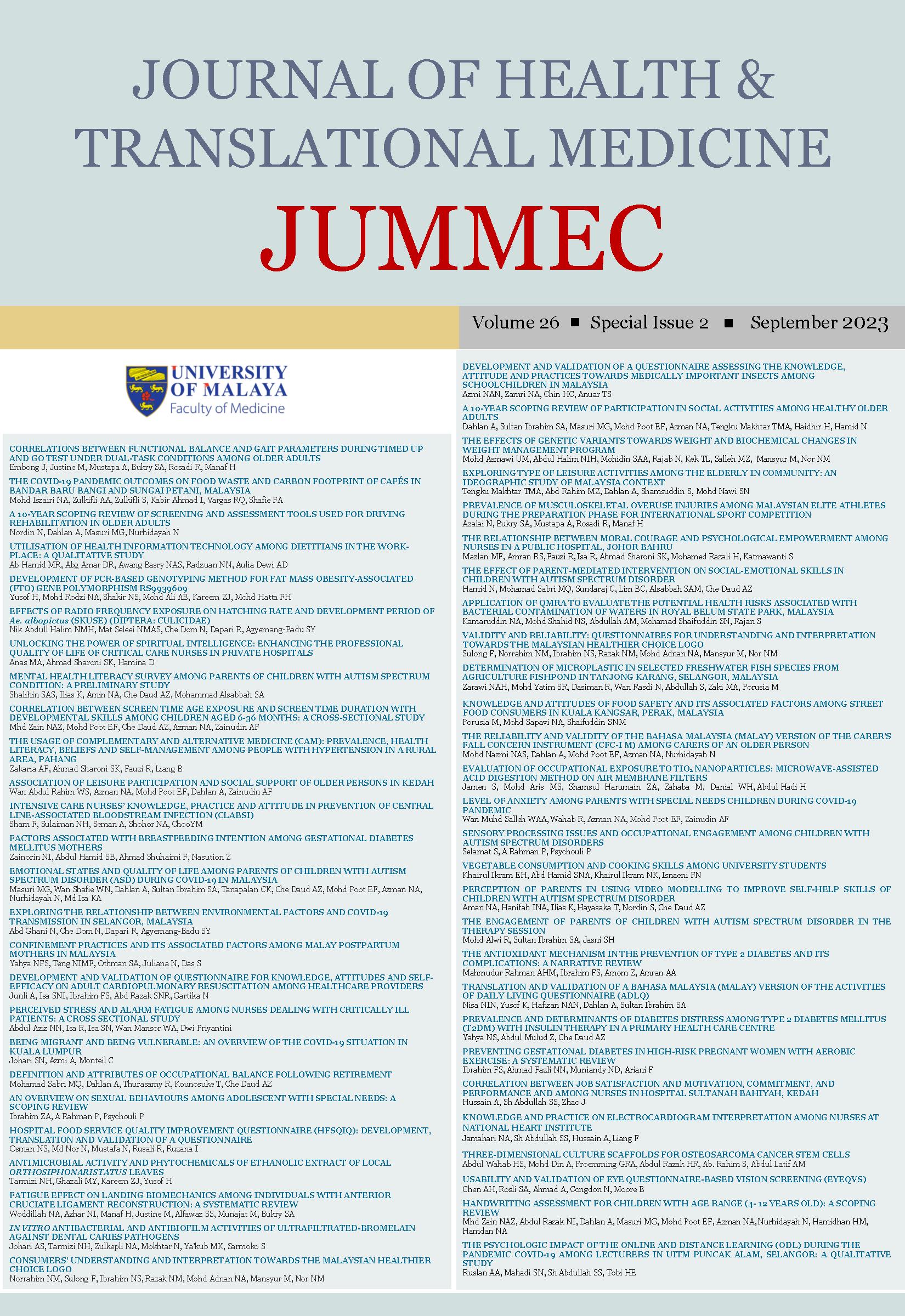EVALUATION OF OCCUPATIONAL EXPOSURE TO TIO2 NANOPARTICLES: MICROWAVE-ASSISTED ACID DIGESTION METHOD ON AIR MEMBRANE FILTERS
Received 2023-07-07; Accepted 2023-09-26; Published 2023-09-26
DOI:
https://doi.org/10.22452/jummec.sp2023no2.39Abstract
Titanium dioxide (TiO2) nanoparticles have been extensively used in various industrial sectors and applications, including cosmetics, catalysts, food additives, inks, paints, and coatings. However, the International Agency for Research on Cancer (IARC) has classified TiO2 nanoparticles as a potential carcinogen for humans, meaning they may cause cancer and pose serious health complications, particularly for manufacturing workers. This highlights the need for better evaluation to determine worker exposure. In this study, suspended TiO2 nanoparticles were sampled using a nanoparticle respiratory deposition (NRD) sampler fitted with specially designed membrane filters and analyzed using Inductively Coupled Plasma Mass Spectrometry (ICP-MS). The digestion method used for titanium element recovery after nanoparticle sampling is crucial for optimal ICP-MS analysis. Therefore, this study aimed to investigate the most suitable digestion method. A microwave-acid digestion method using concentrated nitric acid and concentrated hydrochloric acid at a 7:4 ratio, with a run time of 30 minutes and the temperature set to 200°C showed remarkable titanium recovery compared to other methods. These findings may pave the way for optimal analysis of suspended TiO2 nanoparticles in assessing occupational exposure while promoting sustainability and eco-friendliness in resource utilization.
Downloads
Downloads
Published
Issue
Section
License
All authors agree that the article, if editorially accepted for publication, shall be licensed under the Creative Commons Attribution License 4.0 to allow others to freely access, copy and use research provided the author is correctly attributed, unless otherwise stated. All articles are available online without charge or other barriers to access. However, anyone wishing to reproduce large quantities of an article (250+) should inform the publisher. Any opinion expressed in the articles are those of the authors and do not reflect that of the University of Malaya, 50603 Kuala Lumpur, Malaysia.


